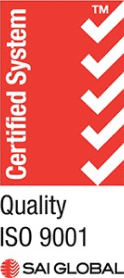A new Code of Practice in Queensland has clarified the responsibility of employers to manage psychological hazards in the workplace. Attwood Marshall Lawyers Legal Practice Director Jeff Garrett, explores what changes workers can expect as the code is rolled out across the state.
Introduction
Since 1 April 2023, employers in Queensland have had to follow a new WorkSafe Code of Practice to manage the risks of psychosocial hazards at work.
Its rollout is a positive one, given that 50 per cent of the current Australian workforce has experienced a mental health condition. This was evident in the Superfriend Annual Report 2019-2020 which showed that two in five workers felt that their workplace either caused or worsened their mental health condition. In addition, an Australian Human Rights Commission survey revealed that one in three people had experienced sexual harassment at work in the past five years (AHRC, 2018).
As most workers are aware, employers have a duty of care and vicarious liability for acts of bullying, discrimination, harassment, misconduct, and violence and aggression that occur in their business perpetrated by owners, managers, supervisors, or co-workers.
The employer’s failure to follow state and federal regulations to protect their workers’ health, safety and welfare culminates in a breach of their obligations and a violation of employment rights. Any worker that falls victim to harm while at work is entitled to seek compensation.
However, historically, there has been a lack of clarity over the steps employers need to take to identify, assess and manage the risks of psychosocial hazards and the psychological health issues of their employees.
That changes with the new Code, which sets out practical guidance for a “person conducting a business or undertaking” (PCBU) and their obligations under the Work Health and Safety 2011 Act (WHS Act) to eliminate or minimise risks to both the physical and psychological health of their employees.
While the new Code does not create a new duty or expand existing duties, it clarifies how PCBUs should meet those obligations in practice.
What are psychosocial hazards?
According to the Code, common psychosocial hazards in the workplace may include:
- high and low job demands;
- little or no job control;
- poor support;
- lack of role clarity;
- poor organisational change management;
- low reward or recognition of a worker’s efforts;
- poor organisational justice (e.g. a lack of procedural fairness, inconsistent communication policies, or a failure to treat people with dignity and respect);
- poor relationships or conflict between co-workers, managers and supervisors;
- remote or isolated work;
- exposure to traumatic events;
- poor environmental conditions;
- violence and aggression;
- bullying; and
- harassment, including sexual harassment.
Worker perspective: why is the QLD Code of Practice a vital tool?
As a worker, it is essential to read the Code and know how employers are expected to manage workplace hazards and risks.
The 67-page document clarifies that psychological illness should be handled the same way an employer would deal with a physical one. It breaks the stigma and emphasises the gravity of psychological damage – which, in the most tragic cases, can lead to death.
Most importantly, it includes strategies to identify and address psychological hazards, emphasising ongoing consultation between an employer and their staff.
The message is clear: the worker must be heard.
The Code broadly aligns with the Safe Work Australia Model Code of Practice 2022. However, the critical difference is that the QLD Code emphasises a hierarchy of controls, which is intended to make sure that people are taking the highest possible control for managing hazards and risks.
The Code sets out four steps that workers can follow if they have a complaint or issue about psychosocial hazards in the workplace:
- A person with a work health issue is to tell the other party about the issue, and initial discussions are to be held;
- If unresolved, parties must make reasonable efforts to achieve a timely, final and effective solution under either an agreed procedure or the default procedure that is prescribed in the regulations;
- If unresolved, a party may ask the regulator to appoint an inspector to attend the workplace;
- If the issue remains unresolved for at least 24 hours, a party can apply to the Queensland Industrial Relations Commission (QIRC).
The Code and Regulations cover workers, contractors, subcontractors, out workers, the self-employed, apprentices and trainees, work experience students, and volunteers.
Employer perspective: how should the PCBUs identify, assess, and control the risks to comply with the Code?
PCBUs must adopt a risk management process that targets identifying, managing, and controlling workplace psychosocial hazards.
Identify the psychosocial hazards
Methods for identifying psychosocial hazards may include:
- observing the workplace;
- consulting workers, supply chains or networks; or
- collecting and reviewing available information.
The Code offers an extensive list of examples of what should be observed, such as how the work is performed, including the physical, mental, and emotional demands of the tasks and activities. The PCBUs could gain insights by looking at minutes of meetings, industrial relations records, employers’ assistance programs, and resolution records.
Employers should also be attentive to work-life balance, inclusive and respectful communication between co-workers, the presence of any patterns or tensions, and past compensation claims.
Again, the Code sets out example signs to look out for during the ongoing consultation phase, including comments from a worker about feeling stressed or emotionally exhausted by their workload. Perhaps they’ve voiced some humiliation because of alleged sexual harassment or that they feel undermined because of other forms of harassment, discrimination, or bullying. Employees may express confusion about what their role involves or perhaps they are torn between competing priorities and they ‘feel like a failure’ for not being able to meet unrealistic expectations.
Assess the risks
A risk assessment should be carried out for any psychosocial hazard that has been identified, even when uncertain. PCBUs need to then assess the duration, frequency, and severity of the hazard, which workers are exposed and whether there is a combination of hazards that increases the risk.
One tool given as an example is identifying the workers at greater risk due to their sex, race, beliefs, pregnancy, sexuality, age, or combination of injury or illness.
Control the risks
The Code sets out control measures for each common psychosocial hazard, where PCBUs must always aim for elimination before anything else. The Code introduces a hierarchy of controls to help identify the measures that should be prioritised.
Maintain and review control measures
Measures must be regularly reviewed and revised to make sure they remain effective.
Action will be required if:
- a control measure does not adequately control the risk it was implemented to manage;
- there is a change at work that could give rise to a new or different threat to health or safety;
- where a new relevant hazard or risk is identified;
- where consultation indicates a review is necessary; or
- when a health and safety representative requests a review.
Why is the Code relevant for workers’ compensation claims, employment law applications, and other overlapping jurisdictions?
The ultimate intent of the Code is prevention. Hence the way the Work Health Safety regulator oversees the risk management frameworks of companies – and penalises them if they are lacking – plays a massive part in keeping workers safe.
When the regulator receives a complaint, the health and safety representative will look at the workplace systems, guides, and procedures and how a psychosocial hazard has been managed at that business. However, the regulator cannot look at compensation, unfair dismissal reinstatement, or other concerns outside their investigation of the incident.
When different jurisdictions are involved, Workplace Health and Safety Queensland will work with that relevant state or territory agency in a way that allows them to manage those components of the potential complaint.
Notwithstanding, courts may regard the WorkSafe Code of Practice as evidence that an employer should know about a hazard, risk, or control, helping to determine what is reasonably practicable in the circumstances to which the Code relates.
In that sense, in a QLD WorkCover common law claim for psychological injury, non-compliance with the Code could be relevant to proving the employer’s ‘fault’ (negligence). Similarly, a failure by the employer to follow the risk management imposed by the Code could serve as proof against the employer in a general protection claim involving unfair dismissal before the Fair Work Commission.
Resources in the Code and other ways to seek assistance
The Code combines numerous studies, examples of psychosocial hazards, models of control measures for psychosocial hazards, work-related bullying policy, and examples of a risk register, which can be very helpful to workers to understand the Code’s applicability.
Additional tools and resources can be found on the WorkSafe QLD website.
If you currently need help with your mental health, support is available. Please reach out to:
- Lifeline on 13 11 14
- MensLine Australia on 1300 789 978
- Suicide Call Back Service on 1300 659 467
- Beyond Blue on 1300 224 636
- Mental Health Triage 24/7 (confidential, QLD only) 1300 642 255
- Open Minds on 1800 370 732
- SANE Australia on 1800 187 263
- Workers’ Psychological Support Service on 1800 370 732
In an emergency, please call 000.
Attwood Marshall Lawyers – helping injured workers access the treatment and compensation they are entitled to
If you have suffered a psychological injury and need advice, our compensation lawyers can help you understand your rights and if your employer has failed to meet their obligations under the Code to protect you from psychosocial hazards at work.
We are also closely attuned to the protections employers should have in place for workers’ rights under the WHS Act, the Fair Work Act 2009, the Workers’ Compensation and Rehabilitation Act 2003, the Workers’ Compensation and Rehabilitation Regulation 2014, the Racial Discrimination Act 1975, the Anti-Discrimination Act 1991, and many other pieces of legislation.
We want to help you get the treatment you need so that you can get your life back on track and get back to work.
Attwood Marshall Lawyers operate on a No Win, No Fee basis for all workers’ compensation claims. For a confidential discussion about your specific circumstances, please call our Compensation Law Department on 1800 621 071 any time.

